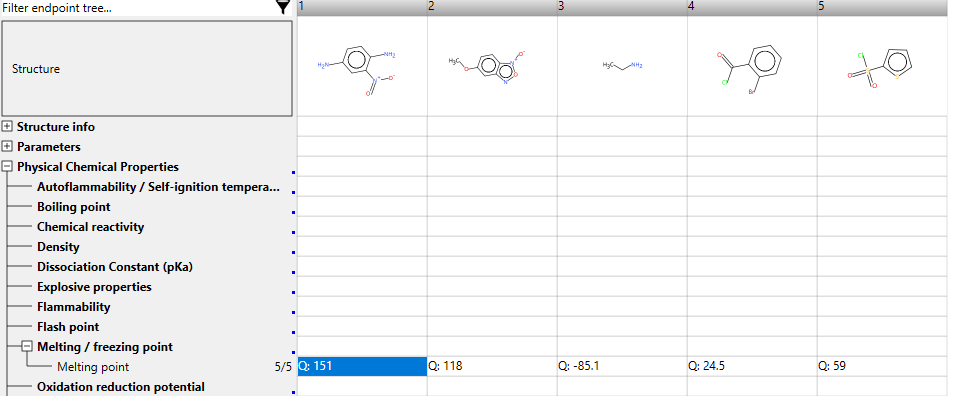Chapter 11: OECD QSAR Toolbox integration
Regression models in QsarDB with molecular descriptor calculation enabled (see the list of enabled models) can be integrated into the OECD QSAR Toolbox. This opportunity has been active since 2018. Please note that the OECD QSAR Toolbox supports only web services that return predictions as numeric values. Therefore, it is not possible to use classification models that return text values.
The following example describes a minimal guide on using a model from the QsarDB repository to make melting point predictions directly from the OECD QSAR Toolbox. Full setup requires information on units, molecular descriptors, software, etc.
Integrate a model into the OECD QSAR Toolbox
1. Open the Data Gap Filling module and define a new QSAR model that uses QsarDB web services
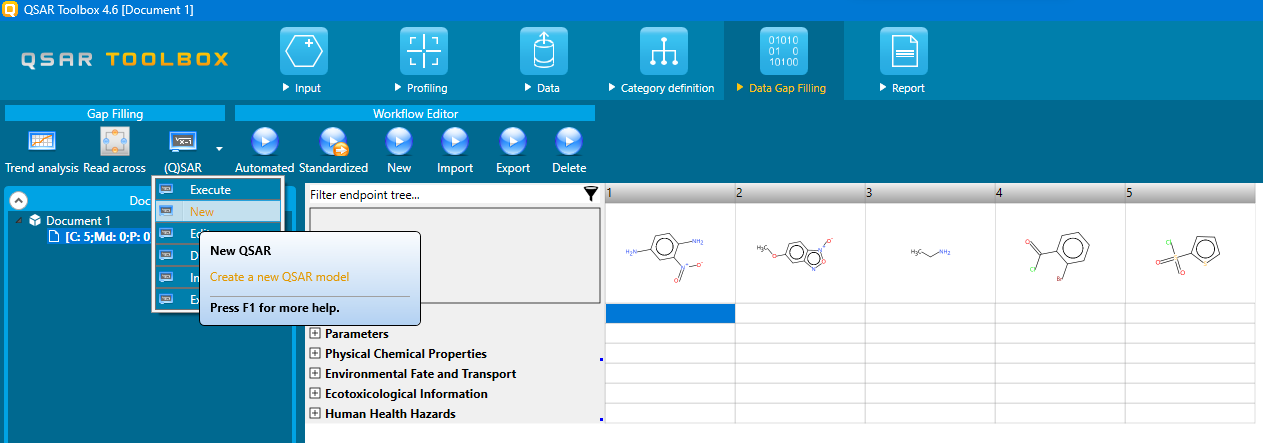
2. Give a name to the model

3. Define an endpoint
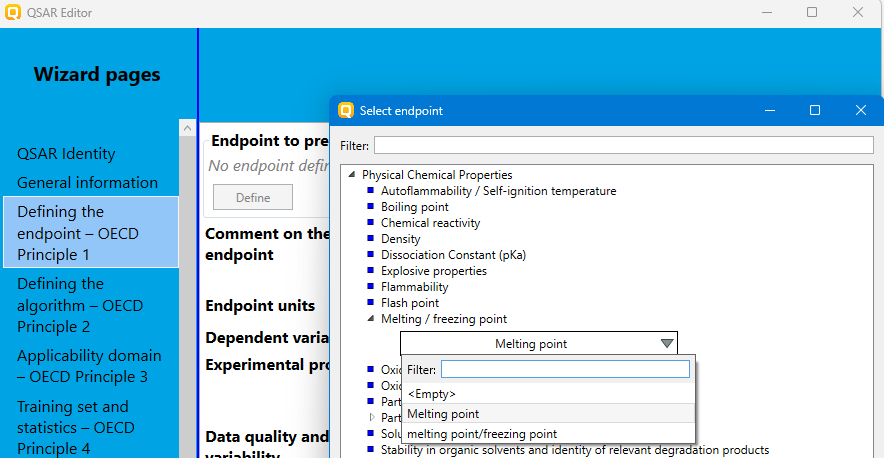
4. Insert the web link for your model and check if it is valid
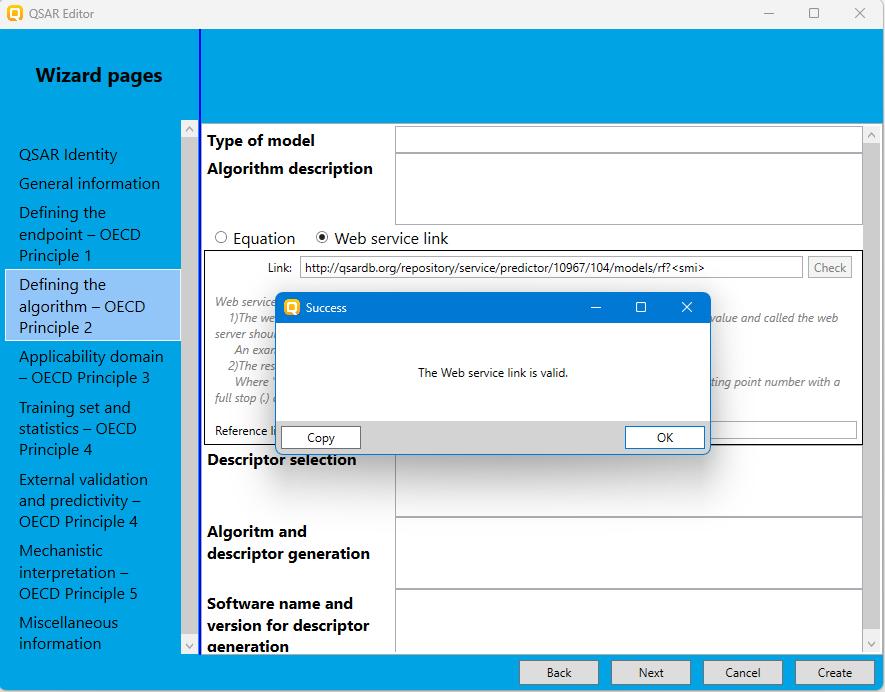
Use the integrated model for prediction
5. Open the Input module and import structures into the Toolbox
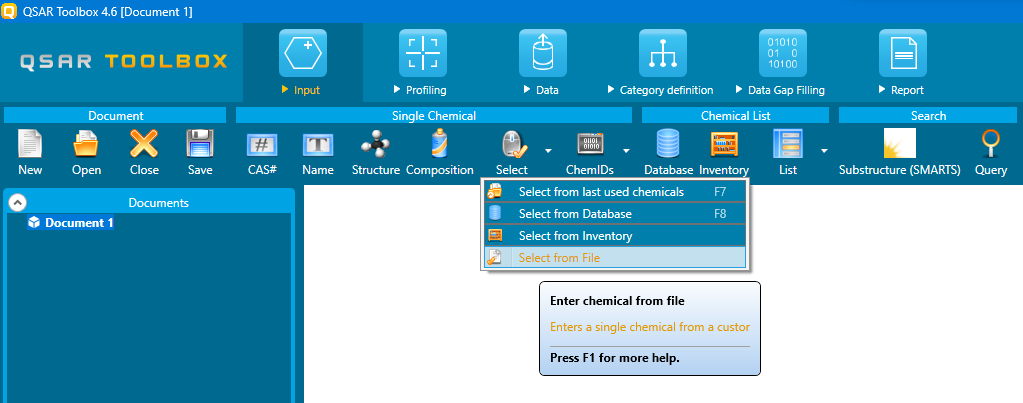
6. Open the Data Gap Filling module and execute your model for prediction

7. Select the endpoint you want to predict (here, Melting Point)
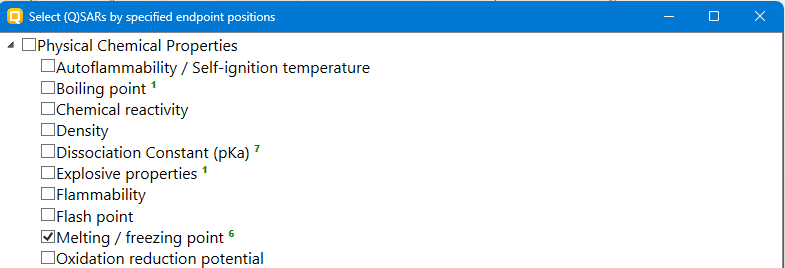
8. Select your model and predict
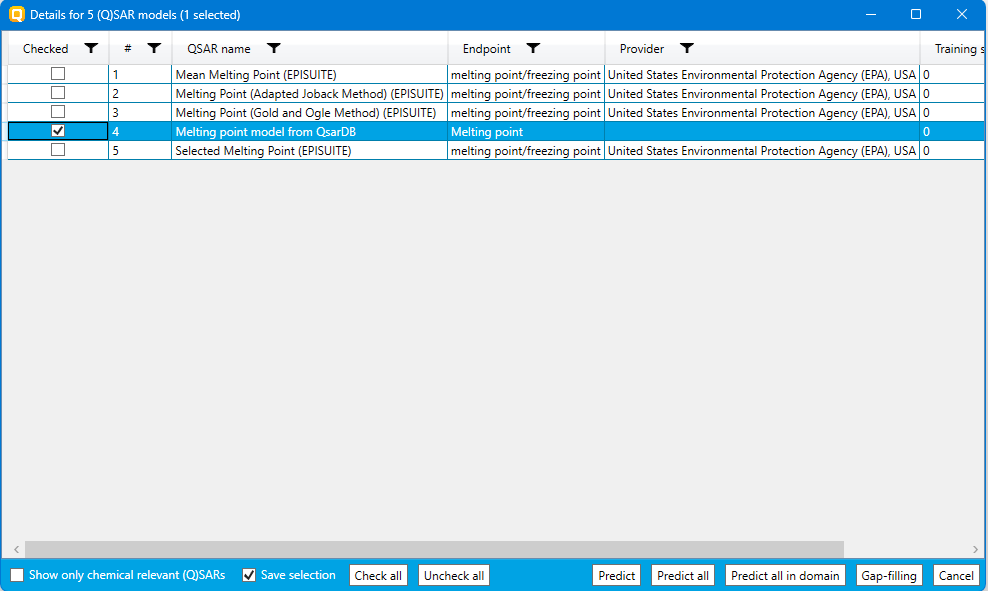
9. See the results
